Classification and technical parameters of optical fiber connectors
What is fiber optic connector?
Optical fiber connector is a device for detachable (movable) connection between optical fiber and optical fiber. It precisely connects the two end faces of the optical fiber so that the optical energy output by the transmitting optical fiber can be coupled to the receiving optical fiber to the maximum extent, and the impact on the system due to its intervention in the optical link is minimized. This is the basic requirement of optical fiber connectors. To a certain extent, fiber optic connectors affect the reliability and performance of the optical transmission system.
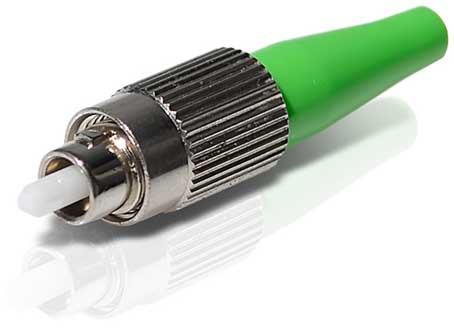
Basic introduction of optical fiber connector
It is used for re-pluggable connection devices between optical fibers, also called optical fiber joints. The main performance parameters (and typical values) are: Insertion loss (<0.5dB), plug repeatability and interchangeability between connectors (changes 500 times), etc. When used in high-capacity high-speed transmission systems, low reflection is also required.
Optical fiber connectors can be divided into common silicon-based optical fiber single-mode and multi-mode connectors according to different transmission media. There are other such as: optical fiber connectors with plastics as transmission media; According to the structure of the connector, it can be divided into: Various forms such as FC, SC, ST, LC, D4, DIN, MU, MT, etc. Among them, ST connectors are usually used for wiring equipment, such as optical fiber distribution frames, optical fiber modules, etc.; The SC and MT connectors are usually used on the network equipment side. According to the shape of the fiber end face, it is divided into FC, PC (including SPC or UPC) and APC; According to the number of fiber cores, there are single-core and multi-core (such as MT-RJ) points. Optical fiber connectors are widely used and have many varieties. In the actual application process, we generally distinguish according to the structure of the optical fiber connector. The following are some common fiber optic connectors:
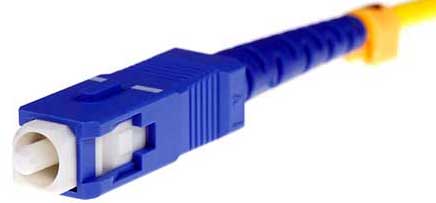
FC type optical fiber connector
This connector was first developed by NTT of Japan. FC is the abbreviation of Ferrule Connector, indicating that the external reinforcement method is a metal sleeve and the fastening method is a turnbuckle. At the earliest, FC type connector, the mating end surface of the ceramic pin used was a flat contact method (FC). This type of connector has simple structure, convenient operation, and easy manufacture, but the fiber end is more sensitive to fine dust, and is prone to Fresnel reflection, which makes it difficult to improve the return loss performance. Later, this type of connector has been improved, using the butt end surface of the spherical pin (PC), while the external structure has not changed. This makes the insertion loss and return loss performance have been greatly improved.
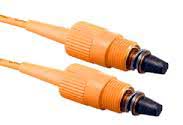
SC fiber optic connector
This is an optical fiber connector developed by NTT Corporation of Japan. Its shell is rectangular, and the structural dimensions of the pins and coupling sleeves used are exactly the same as the FC type. Among them, the end face of the pin mostly adopts PC or APC type grinding method; The fastening method is a plug-in bolt type, without rotation. This type of connector is cheap, easy to plug and unplug, small fluctuations in insertion loss, high compressive strength, and high installation density.
ST and SC interfaces are two types of optical fiber connectors. For 10Base-F connection, the connector is usually ST type. For 100Base-FX, the connector is of SC type in most cases. The core of the ST connector is exposed, and the core of the SC connector is inside the connector.
Double cone connector
The most representative product in this type of optical fiber connector was developed by Bell Labs in the United States. It is composed of two precision molded ends, a cylindrical plug with a truncated cone shape, and a coupling assembly with a double cone plastic sleeve inside. DIN47256 optical fiber connector is a connector developed by Germany. The structure size of the pin and coupling sleeve used in this connector is the same as that of the FC type, and the end face treatment adopts the PC grinding method. Compared with the FC type connector, its structure is more complicated. The internal metal structure has a spring to control the pressure, which can avoid damage to the end face due to excessive insertion pressure. In addition, the mechanical precision of this connector is high, so the insertion loss value is small.
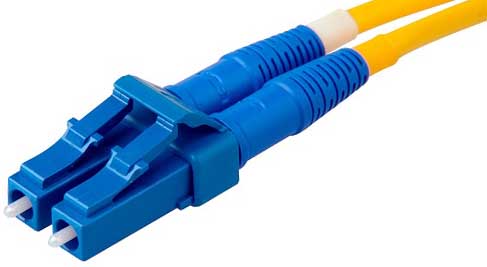
MT-RJ type connector
MT-RJ started with the MT connector developed by NTT, with the same latch mechanism as the RJ-45 LAN electrical connector. The optical fiber is aligned with the guide pins installed on both sides of the small sleeve. In order to facilitate the connection with the optical transceiver, the optical fiber on the connector end face is a dual-core (0.75mm interval) arrangement design. It is a next-generation high-density optical fiber connector mainly used for data transmission.
LC fiber optic connector
The LC connector is researched and developed by the famous Bell Research Institute, and is made of a convenient modular jack (RJ) latch mechanism. The size of the pins and sleeves used is half the size of ordinary SC, FC, etc., which is 1.25mm. This can increase the density of optical fiber connectors in the optical fiber distribution frame. At present, in terms of single-mode SFF, LC-type connectors have actually occupied a dominant position, and their applications in multi-mode have also grown rapidly.
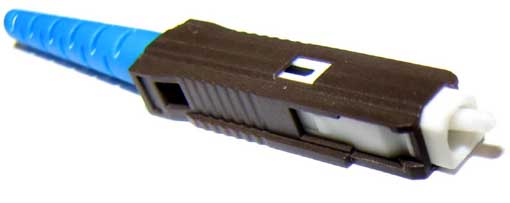
MU type connector
MU (Miniature unit Coupling) connector is the world's smallest single-core optical fiber connector developed by NTT based on the most used SC connector. The connector uses a 1.25mm diameter sleeve and a self-retaining mechanism, and its advantage is that it can achieve high-density installation. Using MU's 1.25mm diameter sleeve, NTT has developed the MU connector series. They have socket type connectors (MU-A series) for optical cable connection; Backplane connector with self-holding mechanism (MU-B series) and simplified socket (MU-SR series) for connecting LD/PD modules and plugs. With the rapid development of optical fiber networks towards greater bandwidth and greater capacity and the widespread application of DWDM technology, the demand for MU connectors will also grow rapidly.
MC connector
In 2012, a domestic communications company independently developed a MC connector that is smaller and denser than the LC connector.
Sunsea MC optical fiber connector is a high-density single-core optical fiber connector, suitable for various high-density occasions. Such as large-capacity central computer room and high-density data center. The density of MC optical fiber connectors is high, which can reach up to twice that of LC connectors in the same space. It is the smallest and highest density connector in the world.
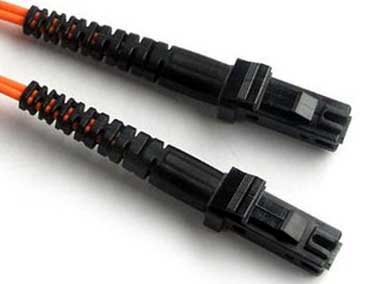
The main parameters:
Fiber optic connector can also refer to FICON—— FIber Connector and G5 server launched in 1998 IBM mainframe channel. Based on the Fibre Channel standard, it has increased the ESCON half-duplex transmission rate of 17MB/s to full-duplex 100MB/s. Each FICON channel can support up to 4000 I/O operations per second, which is equivalent to 8 ESCON channels.
Optical fiber connector is a device for detachable (movable) connection between optical fiber and optical fiber. It precisely connects the two end faces of the optical fiber so that the optical energy output by the transmitting optical fiber can be coupled to the receiving optical fiber to the maximum extent, and the impact on the system due to its intervention in the optical link is minimized. This is the basic requirement of optical fiber connectors. To a certain extent, fiber optic connectors affect the reliability and performance of the optical transmission system.

Basic introduction of optical fiber connector
It is used for re-pluggable connection devices between optical fibers, also called optical fiber joints. The main performance parameters (and typical values) are: Insertion loss (<0.5dB), plug repeatability and interchangeability between connectors (changes 500 times), etc. When used in high-capacity high-speed transmission systems, low reflection is also required.
Optical fiber connector classification
The principle of fiber optic connector dockingOptical fiber connectors can be divided into common silicon-based optical fiber single-mode and multi-mode connectors according to different transmission media. There are other such as: optical fiber connectors with plastics as transmission media; According to the structure of the connector, it can be divided into: Various forms such as FC, SC, ST, LC, D4, DIN, MU, MT, etc. Among them, ST connectors are usually used for wiring equipment, such as optical fiber distribution frames, optical fiber modules, etc.; The SC and MT connectors are usually used on the network equipment side. According to the shape of the fiber end face, it is divided into FC, PC (including SPC or UPC) and APC; According to the number of fiber cores, there are single-core and multi-core (such as MT-RJ) points. Optical fiber connectors are widely used and have many varieties. In the actual application process, we generally distinguish according to the structure of the optical fiber connector. The following are some common fiber optic connectors:

FC type optical fiber connector
This connector was first developed by NTT of Japan. FC is the abbreviation of Ferrule Connector, indicating that the external reinforcement method is a metal sleeve and the fastening method is a turnbuckle. At the earliest, FC type connector, the mating end surface of the ceramic pin used was a flat contact method (FC). This type of connector has simple structure, convenient operation, and easy manufacture, but the fiber end is more sensitive to fine dust, and is prone to Fresnel reflection, which makes it difficult to improve the return loss performance. Later, this type of connector has been improved, using the butt end surface of the spherical pin (PC), while the external structure has not changed. This makes the insertion loss and return loss performance have been greatly improved.

SC fiber optic connector
This is an optical fiber connector developed by NTT Corporation of Japan. Its shell is rectangular, and the structural dimensions of the pins and coupling sleeves used are exactly the same as the FC type. Among them, the end face of the pin mostly adopts PC or APC type grinding method; The fastening method is a plug-in bolt type, without rotation. This type of connector is cheap, easy to plug and unplug, small fluctuations in insertion loss, high compressive strength, and high installation density.
ST and SC interfaces are two types of optical fiber connectors. For 10Base-F connection, the connector is usually ST type. For 100Base-FX, the connector is of SC type in most cases. The core of the ST connector is exposed, and the core of the SC connector is inside the connector.
Double cone connector
The most representative product in this type of optical fiber connector was developed by Bell Labs in the United States. It is composed of two precision molded ends, a cylindrical plug with a truncated cone shape, and a coupling assembly with a double cone plastic sleeve inside. DIN47256 optical fiber connector is a connector developed by Germany. The structure size of the pin and coupling sleeve used in this connector is the same as that of the FC type, and the end face treatment adopts the PC grinding method. Compared with the FC type connector, its structure is more complicated. The internal metal structure has a spring to control the pressure, which can avoid damage to the end face due to excessive insertion pressure. In addition, the mechanical precision of this connector is high, so the insertion loss value is small.

MT-RJ type connector
MT-RJ started with the MT connector developed by NTT, with the same latch mechanism as the RJ-45 LAN electrical connector. The optical fiber is aligned with the guide pins installed on both sides of the small sleeve. In order to facilitate the connection with the optical transceiver, the optical fiber on the connector end face is a dual-core (0.75mm interval) arrangement design. It is a next-generation high-density optical fiber connector mainly used for data transmission.
LC fiber optic connector
The LC connector is researched and developed by the famous Bell Research Institute, and is made of a convenient modular jack (RJ) latch mechanism. The size of the pins and sleeves used is half the size of ordinary SC, FC, etc., which is 1.25mm. This can increase the density of optical fiber connectors in the optical fiber distribution frame. At present, in terms of single-mode SFF, LC-type connectors have actually occupied a dominant position, and their applications in multi-mode have also grown rapidly.

MU type connector
MU (Miniature unit Coupling) connector is the world's smallest single-core optical fiber connector developed by NTT based on the most used SC connector. The connector uses a 1.25mm diameter sleeve and a self-retaining mechanism, and its advantage is that it can achieve high-density installation. Using MU's 1.25mm diameter sleeve, NTT has developed the MU connector series. They have socket type connectors (MU-A series) for optical cable connection; Backplane connector with self-holding mechanism (MU-B series) and simplified socket (MU-SR series) for connecting LD/PD modules and plugs. With the rapid development of optical fiber networks towards greater bandwidth and greater capacity and the widespread application of DWDM technology, the demand for MU connectors will also grow rapidly.
MC connector
In 2012, a domestic communications company independently developed a MC connector that is smaller and denser than the LC connector.
Sunsea MC optical fiber connector is a high-density single-core optical fiber connector, suitable for various high-density occasions. Such as large-capacity central computer room and high-density data center. The density of MC optical fiber connectors is high, which can reach up to twice that of LC connectors in the same space. It is the smallest and highest density connector in the world.

The main parameters:
|
MC/UPC
|
|
|
Insertion loss (typical)≤0.30dB
|
|
|
Insertion loss (random)
|
≤0.50dB
|
|
Return loss
|
≥40dB
|
|
MC/APC
|
|
|
Insertion loss (typical)
|
≤0.30dB
|
|
Insertion loss (random)
|
≤0.50dB
|
|
Return loss
|
≥60dB
|
Fiber optic connector can also refer to FICON—— FIber Connector and G5 server launched in 1998 IBM mainframe channel. Based on the Fibre Channel standard, it has increased the ESCON half-duplex transmission rate of 17MB/s to full-duplex 100MB/s. Each FICON channel can support up to 4000 I/O operations per second, which is equivalent to 8 ESCON channels.





